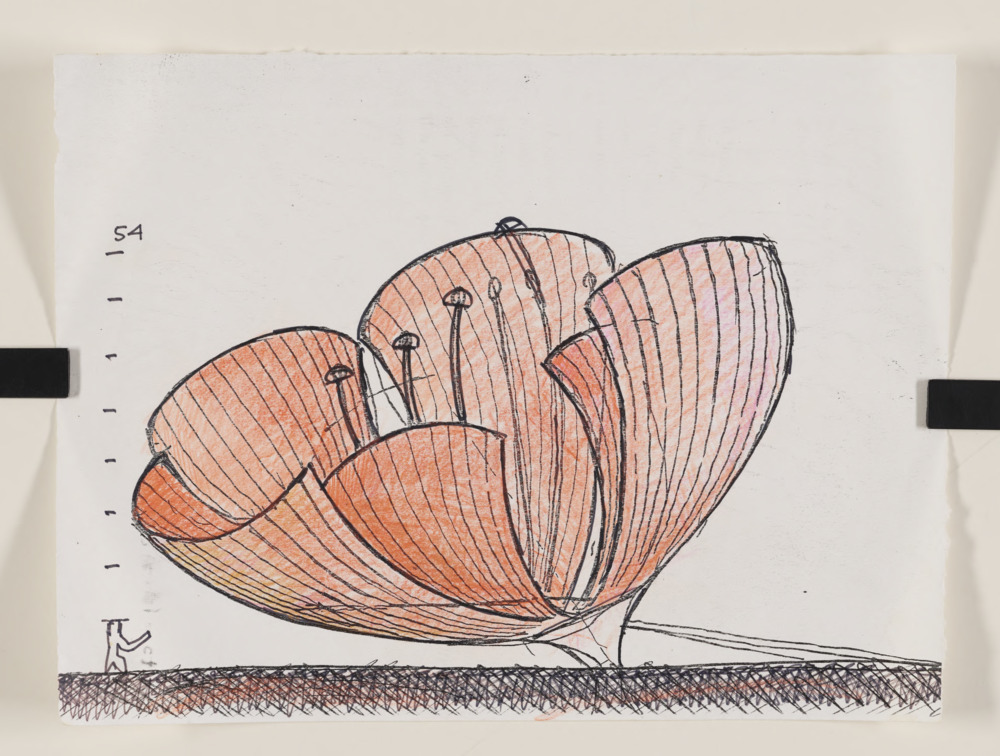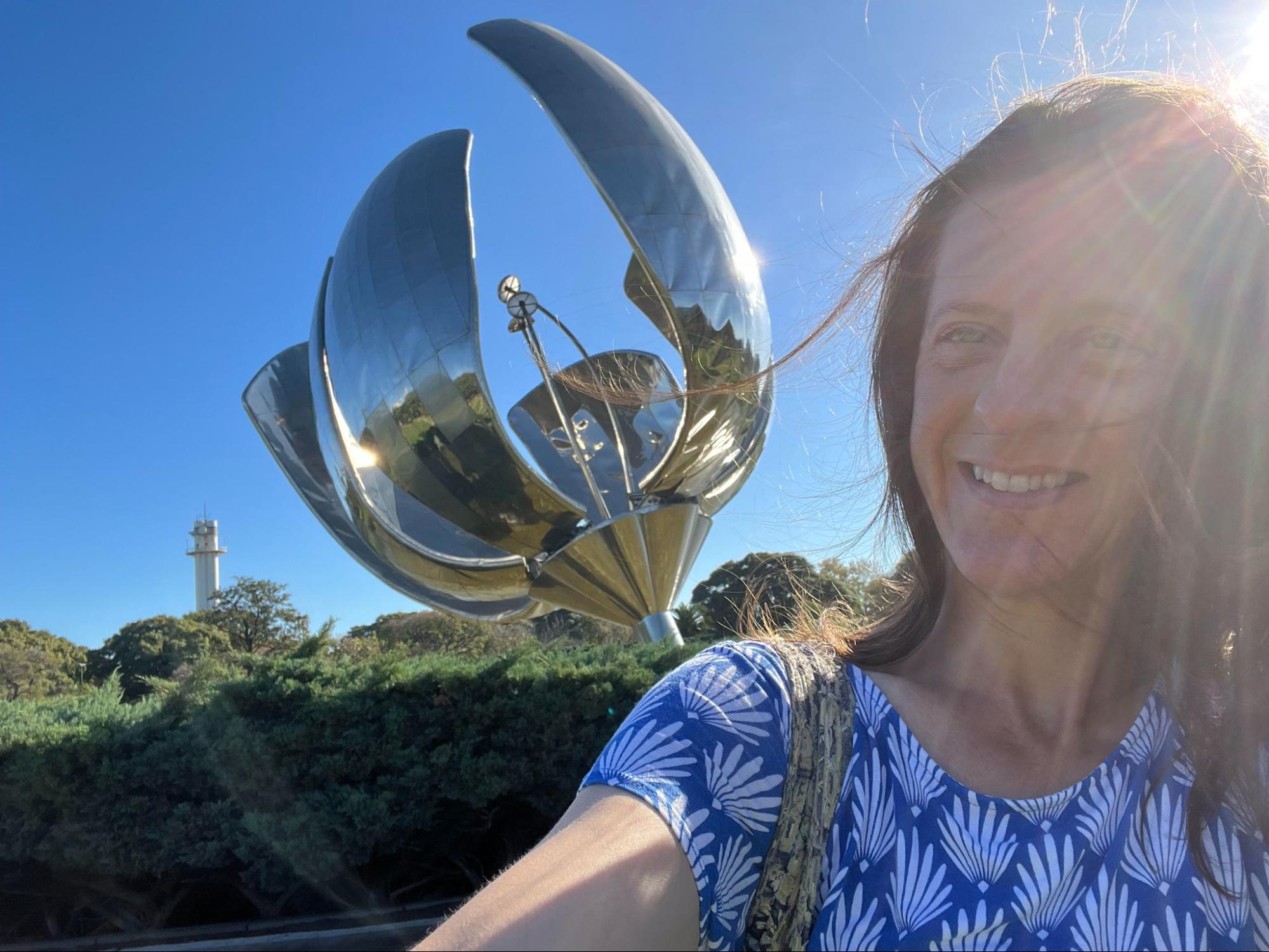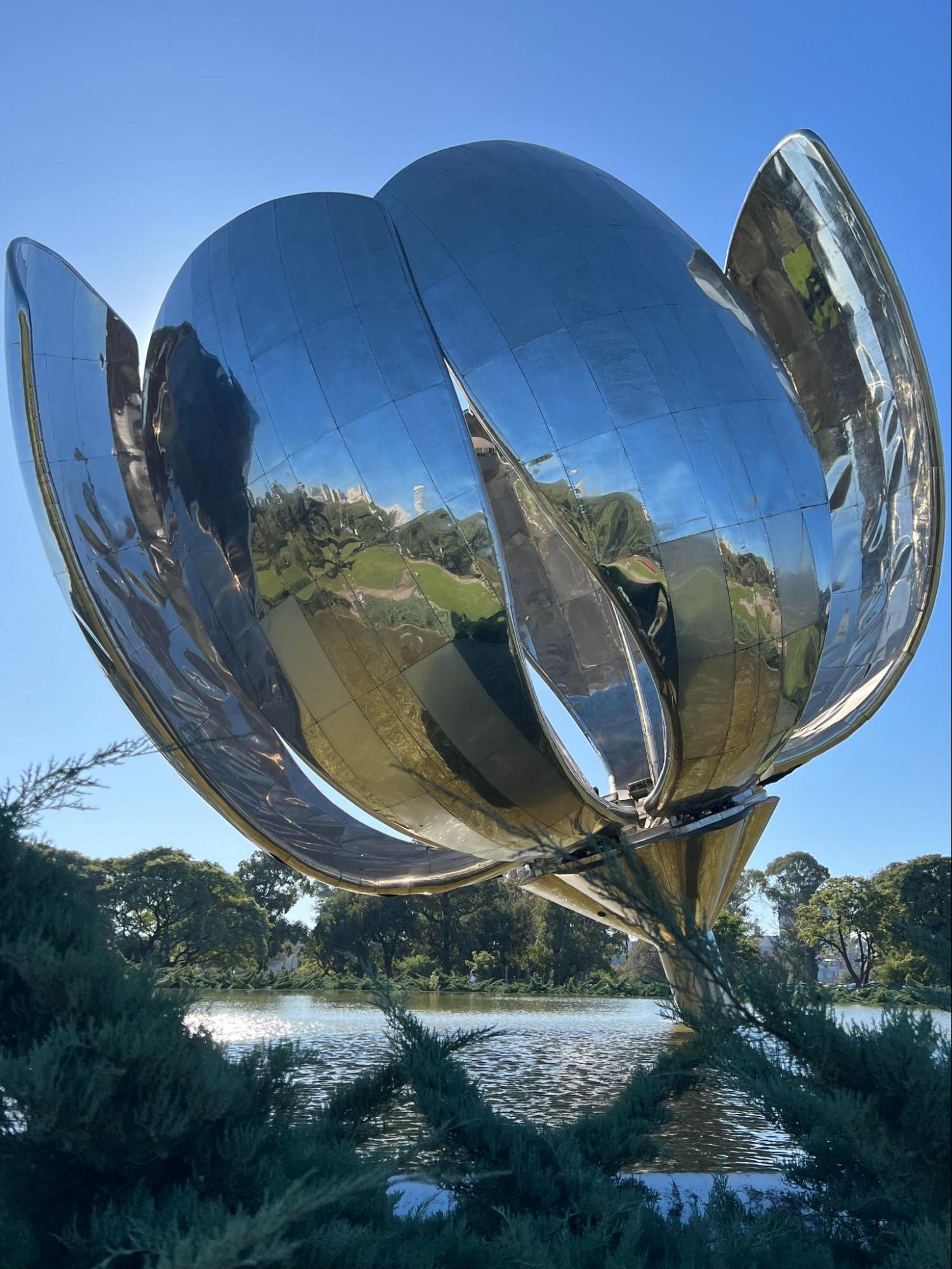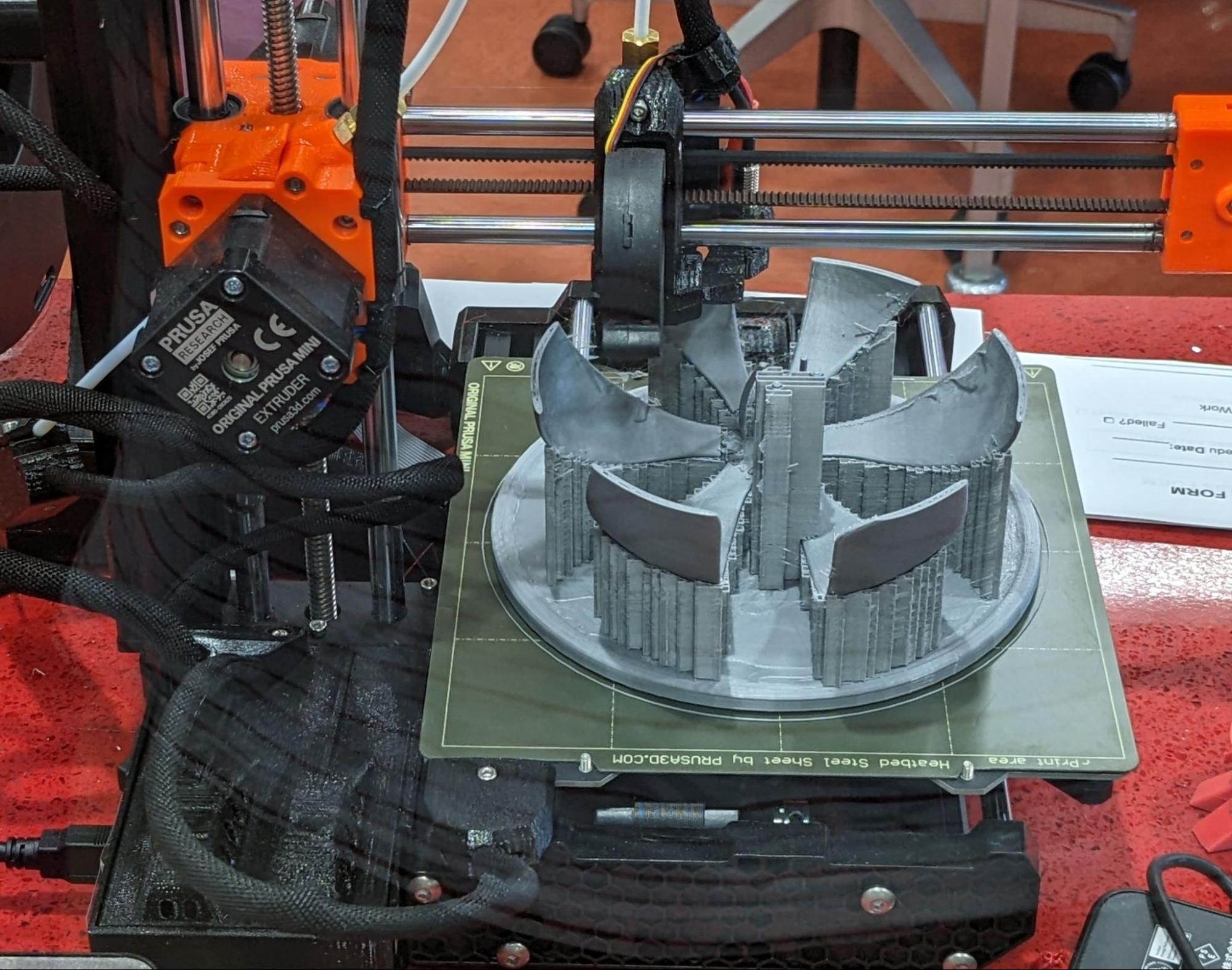
Discovering Floralis Generica in Buenos Aires, Argentina

Author: Gwynn Thayer, Associate Head and Chief Curator, SCRC and Alana Gomez, Graduate Assistant, SCRC
It’s always exciting to be able to showcase our materials in our Special Collections blog, but it’s even more meaningful when we get to connect with our collections on a personal level. In the summer of 2023, I (Gwynn Thayer, Chief Curator and Associate Head of Special Collections) was able to take a trip to Buenos Aires, Argentina, for a public history conference. In doing so, I was able to view a beautiful sculptural piece for which SCRC holds original drawings, the Floralis Generica designed by Eduardo Catalano.
The Eduardo Catalano Papers is one of our most requested architecture collections in Special Collections; the famous “Catalano House” in Raleigh is always of great interest to researchers around the world, among other architectural items in this collection. But one of the hidden gems in the Catalano Papers is the set of preliminary drawings for this enormous public sculpture located in Buenos Aires.


Catalano wrote about the piece, noting that
Many cities in the world have a symbol.
In some it is a monumental work of art or engineering, a bridge, an aqueduct, or the dome of a church dominating the citiscape.
In others it is a unique element of nature or a public space that becomes an urban heart.
He later explains that his Floralis Generica is the “synthesis of all flowers created by nature” and this piece carries the sounds of hope and eternal spring to the city of Buenos Aires.
This excerpt is taken from one of the items in the collection that document the story behind its creation, a book signed by Catalano himself:

When I visited the Floralis Generica in person in Buenos Aires, I was struck by its magnificence and exotic beauty; it was so much larger and more powerful than I had expected and was one of the highlights of my trip to Argentina. Its position in the heart of the city was significant, as it was clearly an important site where visitors and city locals made a point of visiting and taking countless photographs, including selfies. I was happy to do the same!

I had also not realized it would be situated in a reflecting pool, and that its petals would reflect in a manner similar to Anish Kapoor’s Cloud Gate sculpture in Chicago’s Millennium Park.


The difference, however, is that Catalano’s petals are in movement, and interact dynamically with the environment according to the weather and time of day.
Shima Hosseininasab, a public history graduate student working with Special Collections, is working on a 3-D model of the sculpture. She notes,
Working on the 3-D model of Catalano's Floralis Generica helped me gain a better understanding of the details and complexity of this architectural masterpiece. The 3-D model print is being created using Cura slicer software. This photo shows gray PLA filament being melted to create the petals' layers. Supporting structures have been defined underneath the petals to stabilize the print. A final step in the process will be to remove all supporting structures so that the design can be displayed.

The following section of this blog post was written by graduate student Alana Gomez, who, along with graduate students Shima Hosseininasab and Kelly Arnold, helped to curate the 75th anniversary College of Design exhibit, College of Design: 75 Years of Designing Tomorrow.
Eduardo Catalano, well-known modernist architect and head of architecture at the School of Design from 1951 to 1956, viewed his life as a series of accidents. In an October 1999 oral history with Les Thornbury, he recalled how he may not have come to the United States if he hadn't seen a friend (fellow architect Horacio Caminos’ brother) on the subway who convinced him to go. He graduated from the Universidad de Buenos Aires in 1940, but having received scholarships to pursue studies in the U.S, Catalano relocated to attend the University of Pennsylvania.
He eventually attended Harvard University and studied under modernist architects Walter Gropius and Marcel Breuer. After graduation, Catalano taught at the Architectural Association in London from 1950 until 1951, where he was recruited by Dean Henry Kamphoefner. Upon landing in Raleigh, Catalano grabbed a cab, told the driver to take him to the Department of Architecture, but ended up at the Department of Agriculture instead. Catalano once joked that “in retrospect, he probably should have stayed there.”
Catalano is best known for his work with warped surfaces and hyperbolic paraboloids. In addition to his masterpieces in the United States, he also designed several important buildings in Argentina. Catalano later brought his friend Horacio Caminos who was an Argentine architect to the School of Design. Both Catalano and Caminos focused on structure design in architecture.
If you have any questions or are interested in viewing the Catalano Papers, or other Special Collections materials, please contact us at library_specialcollections@ncsu.edu or submit a request online. The Special Collections Research Center is open by appointment only. Appointments are available Monday–Friday, 9am–6pm and Saturday, 1pm–5pm. Requests for a Saturday appointment must be received no later than Tuesday of the same week.